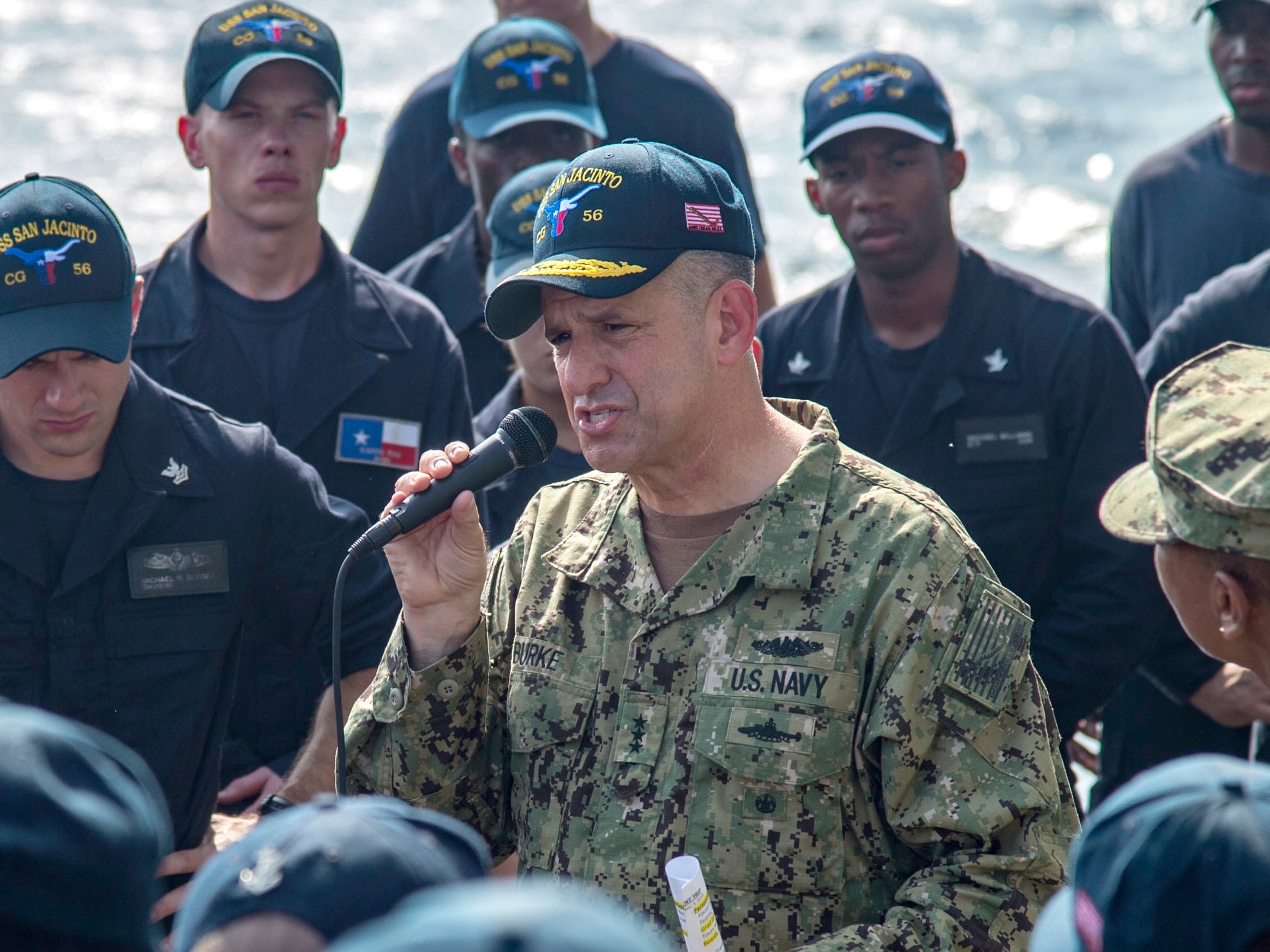WASHINGTON — The U.S. Navy would not buy more ships if it were given more money in fiscal 2023.
The Navy often uses its so-called unfunded priorities list sent to Congress to ask for another destroyer or connector vessel. But the service is standing firm in its belief that it doesn’t want a fleet any larger than what it can afford to keep ready — having enough sailors, funding for training, dollars and shipyard capacity for maintenance and modernization work, munitions to fill missile launchers, spares to fill stock rooms, and more.
Instead, the Navy is focused on readiness and future lethality in its annual wish list, a copy of which was obtained by Defense News.
The top item on the list is a relatively low-dollar one: $23 million in weapons maintenance funding to expand the number of combat-usable Standard Missile-6 weapons, clearing the backlog of 125 missiles that need upgraded to support Pacific operations.
Second on the list is $33 million to buy 11 more AGM-158C-1 Long Range Anti-Ship Missiles to boost lethality.
Next comes $171 million for “maritime spares outfitting” for surface ships, submarines, unmanned systems, IT systems and more to increase spares availability at the point of use. Then there’s $175 million to fund ship repair and spare parts to support greater operations in the Pacific theater as part of the Pacific Deterrence Initiative.
Next is $293 million for aviation spares so that carrier air wings are equipped with the maximum allowable spares.
This focus on readiness is in line with what Chief of Naval Operations Adm. Mike Gilday has repeatedly preached: After fully funding the all-important Columbia-class ballistic missile submarine program as part of the Defense Department’s nuclear triad, the Navy would prioritize its remaining money on readiness for today, lethality modernization for tomorrow and then “capacity at an affordable rate” with any leftover money.
That mentality shaped the formal FY23 budget request, which was released publicly March 28. In it, the Navy asked for nine new ships and 96 aircraft, which is one more ship but 11 fewer aircraft than the FY22 request.
The Navy used its FY22 wish list to ask for a second destroyer as its main request. That riled lawmakers, who said this second DDG should have been in the formal budget request rather than put in the unfunded priorities list with the hopes that lawmakers might add in funding for it.
The FY22 unfunded list included $5.6 billion for 31 items. This year’s request, which includes 43 items that total $4 billion, clearly prioritizes readiness.
Other readiness initiatives include, but are not limited to:
- $189 million for public shipyard tools, test equipment and machinery, likely part of the overall Shipyard Infrastructure Optimization Program to modernize the four public shipyards.
- $57 million for more flight hours to support the Pacific Deterrence Initiative.
- $160 million for aircraft depot maintenance.
- $40 million for landing craft air cushion sustainment.
- $13 million for Mk 18 unmanned underwater vehicle sustainment.
- $145 million for facilities sustainment and improvements.
In the lethality category, the Navy asked for:
- $101 million for tactical data links and networks.
- $61 million to develop the Hypersonic Offensive Anti-Surface Warfare Increment 2 weapon.
- $53 million for range improvements of the Long Range Anti-Ship Missile.
- $11 million for mine countermeasures mission package capacity and wholeness.
- $67 million for two ship sets of the Next Generation Jammer mid-band aircraft capability.
- Other spending items for improved sensors and munitions.
The capacity category is relatively thin in this year’s list. The Navy asks for $708 million to buy six additional F-35C carrier variant Joint Strike Fighters, bringing the total buy from nine to 15. The Navy requested 20 in FY22 but just nine in FY23, with the deputy assistant secretary of the Navy for budget, Rear Adm. John Gumbleton, telling reporters that the decrease in F-35C quantity reflected the tight budget environment rather than a decreased need for the jets.
It also asks for $400 million for two more E-2D Advanced Hawkeye planes, bringing the total request to seven.
The list also includes $26 million for 79 AIM-9X Sidewinder air-to-air missiles; $446 million for three KC-130J cargo aircraft for Navy Unique Fleet Essential Airlift Logistics; and $49 million for MK-48 heavyweight torpedo procurement.
Megan Eckstein is the naval warfare reporter at Defense News. She has covered military news since 2009, with a focus on U.S. Navy and Marine Corps operations, acquisition programs and budgets. She has reported from four geographic fleets and is happiest when she’s filing stories from a ship. Megan is a University of Maryland alumna.










